The China Study Center at Karakoram International University launched a literary masterpiece, “Silk Route Revisited: Essays and Perspectives on the China-Pakistan Economic Corridor and Beyond,” during the International Conference on China-Pakistan Economic Corridor (CPEC) and Sustainable Tourism Development for Women Empowerment in Pakistan.
This enlightening book, edited by a distinguished panel of researchers – Dr. Faqeer Muhammad, Dr. Saranjam Baig, Dr. Khalid Mehmood Alam, and Dr. Attaullah Shah – promises readers a captivating voyage through the historic Silk Route, recreated through the prism of modern dimensions.
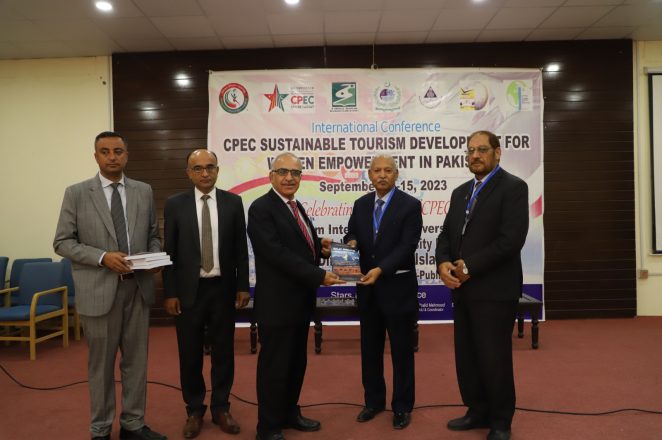
The China-Pakistan Economic Corridor (CPEC), a tremendous initiative that has given Pakistan’s socioeconomic structure new life and prospects, has enabled immense development in the country. One of the book’s notable features is its ability to provide readers with a complete grasp of CPEC’s complex influence on Pakistan.
“Silk Route Revisited” highlights the noteworthy successes so far, such as creating employment opportunities for more than 200,000 Pakistanis, the knowledge exchange with 40,000 Pakistani students studying in China, significant Chinese investments, and significant increases in Pakistan’s electricity generation capacity – effectively addressing the country’s persistent energy shortages.
Furthermore, “Silk Route Revisited” examines the economic aspects of Pakistan-China relations and the shared values, objectives, and worldviews that sustain this strategic alliance. It underlines how this relationship is based on mutual respect and cooperation rather than purely transactional.
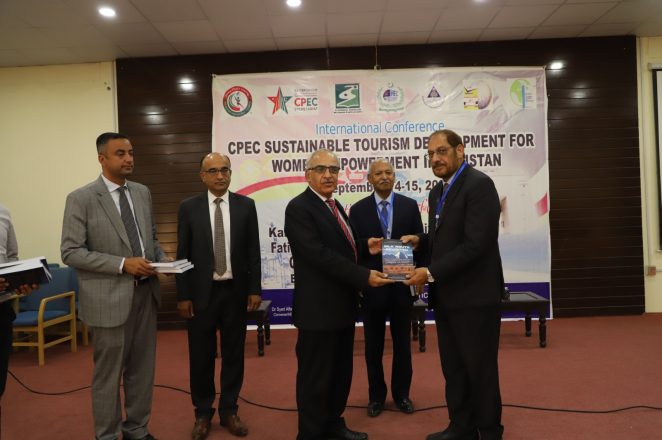
In the first chapter, empirical data on reduced transportation expenses and travel times along the CPEC route are presented, illustrating the potential of these changes to regional trade dynamics. This empirical ground prepares the reader for the following 14 chapters, each focusing on a different aspect of CPEC’s impact.
The book examines the social and cultural aspects of CPEC in addition to economic factors. The second chapter provides insight into the role of governmental actors in the growth of the tourism industry along the CPEC route, highlighting the necessity of significant local stakeholder participation to achieve people-centric development. The policy ideas in this chapter offer valuable insights into sustainable tourist planning.
Chapter 3 introduces the blue economy idea, highlighting the unrealized potential of Pakistan’s maritime zone in the context of CPEC. It outlines a vision for long-term, inclusive economic development, including creating zones to generate jobs and reduce poverty.
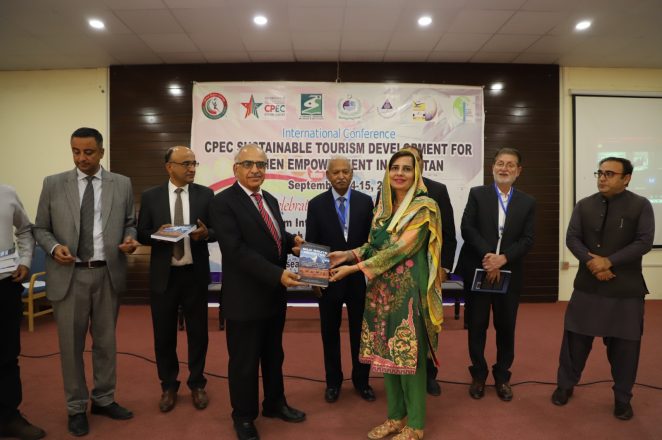
In Chapter 4, which focuses primarily on Pakistan-China ties, the historical and geopolitical significance of CPEC is examined. The chapter highlights the development of the two nations’ enduring alliance post-CPEC period. Additionally, it recognizes the regional and international difficulties and opportunities that this connection faces.
Chapter 5 examines how locals’ perceptions of tourism growth in the Gilgit-Baltistan region relate to their understanding of the CPEC. It highlights the significance of spreading awareness of CPEC’s impacts on tourism. It addresses project criticisms before suggesting legislative initiatives to increase public support.
The sixth chapter analyzes the influence of CPEC on entrepreneurial activity in Pakistan. It discusses corporate expansion problems and opportunities in several industries, emphasizing the potential for socioeconomic growth and poverty alleviation.
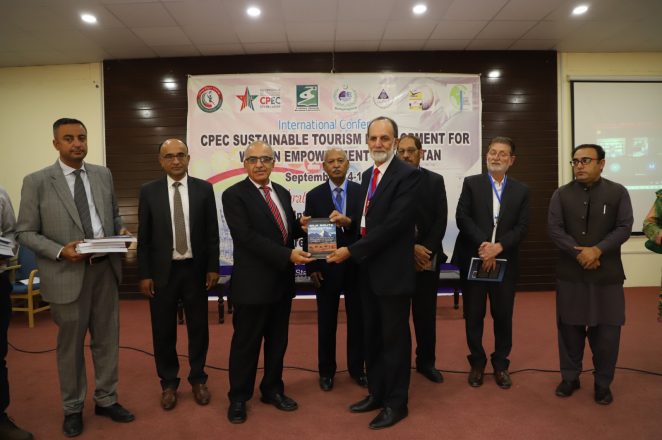
Chapter 7 on urbanization and energy security in Pakistan is especially pertinent, underscoring the crucial need to manage energy supplies in the face of growing urbanization and economic growth. Energy instability and the potential for renewable energy sources, particularly China’s experience in this field, make a strong basis for cooperation between the two nations.
Chapter 8 investigates the sometimes-neglected cross-cultural issues between China and Pakistan, highlighting the essence of understanding cultural differences and commonalities for successful cooperation. In the context of CPEC, this chapter underlines the value of interpersonal relationships.
A current perspective is provided in Chapter 9’s discussion of the geopolitical importance of the Gilgit-Baltistan region. It stresses the region’s critical role in regional and extra-regional integration, particularly in the Belt and Road Initiative context. This chapter discusses the region’s potential significance and prospective effects despite its contentious political status.
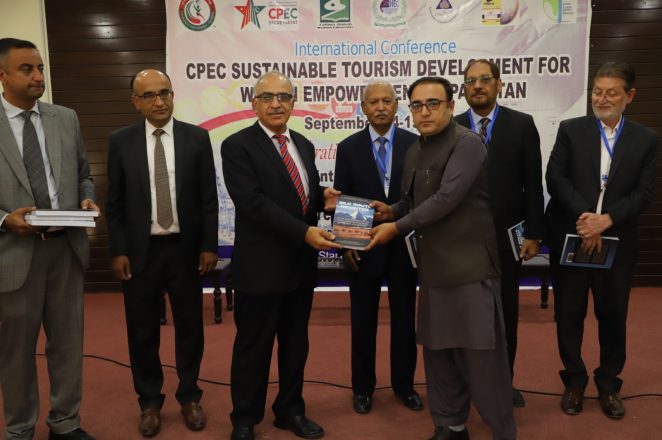
Chapter 10 focuses on the economic consequences of CPEC for Pakistan, emphasizing its ability to increase industrial growth, provide job opportunities, and improve trade through the Gwadar Port. The chapter additionally points out the importance of excellent planning and governance to effectively capitalize on CPEC’s economic benefits.
The chapters (Chapters 11 and 12) on Chinese language study and cultural interchange between China and Pakistan provide a particular viewpoint on the delicate facets of the relationship between the two countries. These sections highlight the growing interest in learning Chinese and the excellent impact of educational and cultural engagement between the two countries.
Chapter 13 broadens the scope by evaluating how several countries across Asia, Europe, and Africa might profit from CPEC, emphasizing the possibility of a win-win situation for every stakeholder involved.
Also Read: Pakistani Diaspora’s dynamic role in building national identity and profile
The book’s multidisciplinary approach is an important feature, allowing readers to obtain a comprehensive knowledge of the ramifications of CPEC. Adding a chapter on food and agriculture and the possibility of mushroom farming in Pakistan’s northern areas offers creative alternatives for securing food and generating revenue.
The final chapter’s emphasis on climate uncertainties and natural hazards along the CPEC route adds a critical layer to the discussion, underlining the importance of hazard assessment and mitigation techniques in difficult mountainous terrain.
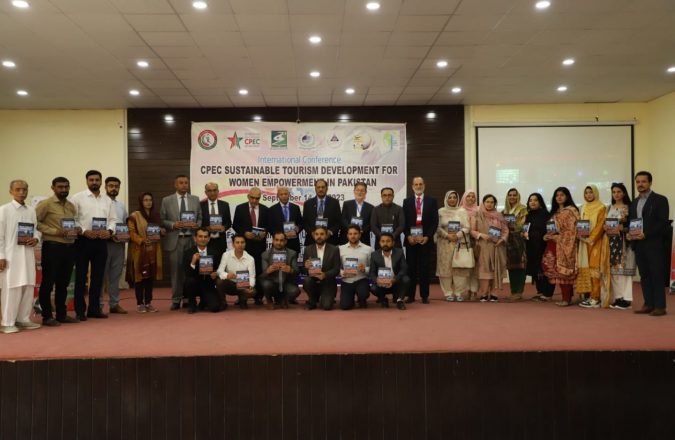
Notably, the book acknowledges China as Pakistan’s “all-weather strategic partner and ‘Iron Brother,’” emphasizing the depth of their connection at a time when few were ready to invest in Pakistan. However, “Silk Route Revisited” does not rest on its laurels; it offers a glimpse into the boundless opportunities ahead, such as Special Economic Zones, agricultural advancements, IT collaborations, and the relocation of Chinese industry, all of which are poised to catalyze Pakistan’s economic growth and development further.
Nonetheless, the authors stress Pakistan’s critical role in ensuring CPEC’s success. The construction of a “one-window operation” for Chinese investors to manage bureaucratic hurdles and the promise of “foolproof security” for Chinese people and projects in Pakistan are two crucial commitments that are stressed. These assurances are critical for the continued growth of mutual trust between the two countries.
Finally, “Silk Route Revisited” is a stimulating and enlightening volume that adds to the ongoing conversation about CPEC from various perspectives. It highlights the possibilities for cooperation, economic growth, and cultural interaction between China and Pakistan while thoroughly studying the project’s effects and difficulties. This book is an excellent resource for anyone interested in learning more about the revolutionary possibilities of CPEC.
International Relations Scholar interested in National Security strategies, with a good focus on Geo-Politics, Foreign Policy, and Public & Cultural Diplomacy.







